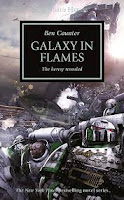Aldous Huxley's Brave New World, alongside Orwell's Nineteen Eighty-four, Zamyatin's We, and Atwood's The Handmaid's Tale, is one of the four horsemen of literary apocalypses. Each depicting a human-capable, dystopian evolution of society, they each extrapolate upon our reality in creating their cautionary visions. Of the four, Huxley's may be the most controversial—at least as of 2023. Highlighting the degree to which technology could penetrate the natural order of life, his book features scary but plausible scenes across the spectrum of society. One seemingly innocuous tidbit underpinning the sexual freedom of his world is the “feelies”. Cinema in which the viewers sense what the actors on screen sense (touch, smell, etc.), our version of pornography in 2023 is nothing in comparison. Grabbing this innocuous tidbit and running with it in an alternate history Los Angeles tale of detective noir is Ian R. Macleod's Wake Up and Dream (2011).
Wake Up and Dream is technically dieselpunk, but in Macleod's sure hands the taxonomy fades to the background. It's more a Los Angeles in which feelies technology has shoved aside the moving pictures industry to form a new cultural phenomenon. Black and white stars whose names we know today have been overwhelmed by celebrities in the new medium. An alternate '40s LA with a big splash of Brave New World cinema, it tells the tale of Clark Gable, private eye at your service. In the opening pages, Gable, as with much noir, has a woman named April Lamotte come knocking at his door requiring services. Married to a successful but alcoholic Hollywood writer named Daniel, she convinces Clark to do what he used to do before becoming an investigator: to act, in this case to pose as Daniel while signing a lucrative script contract. Daniel too drunk to do it himself, Gable agrees to dress and play the part for a tidy fee. One tailored suit, script, and handshake later and the contract is signed. Simple, right? Of course, not. There wouldn't be a book otherwise. And so the skeletons in Hollywood's closet come knocking.










